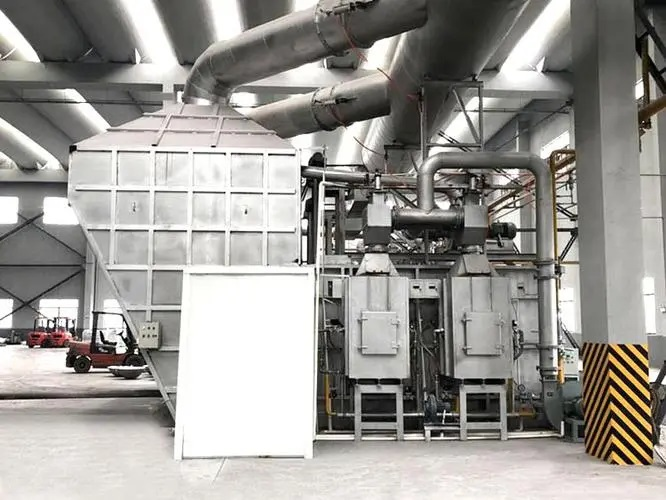What Is High Temperature Air Combustion?
High Temperature Air combustion—HTAC or Highly preheated Air combustion—HPAC, this technology is also called Flameless combustion, it is a new type of combustion technology that was researched and promoted in the 1990s. It has multiple advantages such as efficient flue gas waste heat recovery, exhaust gas temperature below 150°C, high preheated air temperature, air temperature around 1000°C, and low NOx emissions.
High Temperature Air Combustion emerges for the first time
The regenerative combustion method is an ancient form and has been used in open-heart and blast furnaces for a long time. The regenerative burner was first successfully developed in the early 1980s by the British Hot Work and British Gas Company. Originally used in small glass melting furnaces, it was called a 'Regenerative Ceramic Burner'. Because it can make the utilization of waste heat of flue gas close to the limit level, and the energy saving benefit is huge, it has been widely promoted and applied in the United States, the United Kingdom, and other countries.

What segments combine this technology?
The regenerative combustion device system is mainly composed of five parts: combustion device, regenerator (with heat storage body inside), reversing system, smoke exhaust system, and connecting pipes. Regardless of the type of combustion device, the regenerators (with regenerators inside) must be arranged in pairs.
The reversing valve uses the movement of the valve body to make the air (or gas) and flue gas reverse in the valve at regular intervals. The reversing time of the reversing valve is related to the flue gas temperature in the furnace and the heat penetration thickness of the regenerator. For a regenerator with a certain heat transmission thickness, the longer the reversing time, the higher the temperature of the flue gas leaving the regenerator.
The lower the preheating temperature of the air (or gas), the lower the heat recovery rate; if the reversing time is too short, the life of the reversing valve will be reduced, so it should be determined through experiments that the best reversing time is Critical. For the regenerator of small spheres, the reversing period is generally 2.0-3.0 minutes; for the regenerator of a honeycomb body, the reversing period is 30-45 seconds or less.
The regenerator is the equipment for placing the regenerator and also the area for heat exchange. It can be placed inside the furnace wall, called the built-in type; it can also be set separately outside the furnace wall, called the external type.
The high-temperature gas channel can be organically built together with the furnace wall, or it can be set separately outside the furnace wall. The nozzle is set in the furnace wall, and the nozzle is not only the burner in the traditional sense but also the smoke exhaust port of the heating furnace.
The masonry between the high-temperature gas passages of the empty gas requires tight masonry to avoid gas crossover to avoid explosions. Therefore, the requirements for furnace wall masonry materials are higher than those of other heating furnaces.
The air and gas supply system of the regenerative combustion technology is the same as the air and gas heating system of the traditional heating furnace, and it also needs segmental supply control. Each section of branch pipe branched from the air and gas main pipes is connected to its own reversing valve, and the reversing valve is connected to a pair of regenerators on both sides of the furnace in two ways. The air and gas branch pipes in front of the reversing valve are equipped with flow detection and adjustment devices and safety protection devices. The air gas supply pressure should take into account the resistance loss of the entire system including the reversing valve and regenerator.
The flue gas comes out of the regenerator, and the temperature has dropped below 200°C. With the help of the smoke exhaust machine, it flows through the reversing valve and the exhaust pipe to the chimney and is discharged into the atmosphere. There are smoke temperature detection and Furnace pressure control device. Since the flue gas temperature is below 200°C, ordinary standard smoke exhausters can meet the requirements for use. The capacity of the smoke exhauster is determined according to the smoke exhaust volume and the system resistance of the flue gas pipeline, so it is also very important to correctly determine the resistance loss when the smoke flows through the regenerator and the reversing valve.


